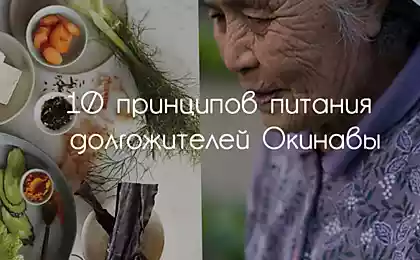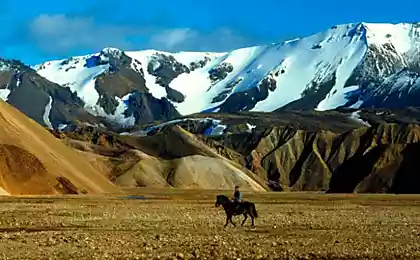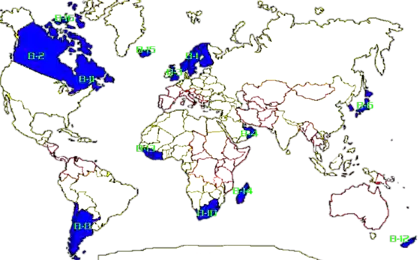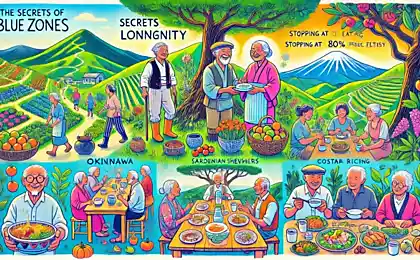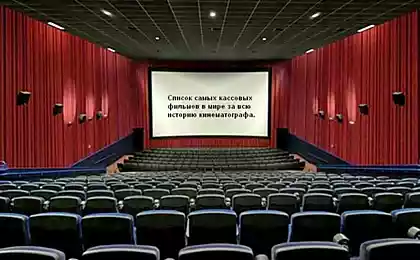216
Secrets of centenarians: what unites the world's "blue zones"

Introduction. When it comes to longevity, the concept of blue zones comes up.
The so-called regions of the planet, where people not only live longer, but also remain active and excellent health.
very respectable age. The term was coined by researchers who studied the phenomenon of concentration.
Centennials and semi-centenarians in certain areas are significantly higher than the global indicators. Among them
Japan includes Okinawa, Italian Sardinia, Greek Ikaria, the Nicoya Peninsula in Costa Rica and the city of Loma Linda
in the state of California (USA). In addition to the impressive life expectancy, these “blue zones” differ in a special way.
It is based on harmony, moderation, strong social ties and amazing cheerfulness.
Scientists from different countries for many years trying to understand what gives residents of the “blue zones” persistent immunity.
to most age-related diseases and retains their strength until old age. World Health Organization Research
and a number of major universities confirm that lifestyle, food culture and mental attitude
They can play an almost decisive role. This article is an analytical review of the traditions, habits and diet of centenarians
from all over the world. We will look at how the community atmosphere, food preferences and meaningfulness of existence
They form the very secrets that allow you to live not only longer, but also better.
1. The concept of “blue zones” and the causes of their phenomenon
The term "Blue Zones" was popularized through the work of researchers, including written material by Dan Buettner.
As a result of extensive expeditions and interviews with old-timers from different regions of the world, common characteristics were revealed.
Explain the impressive life expectancy. Among the key points:
- Eating moderation: In most "blue zones" residents consume natural products.
rich in proteins of plant origin, vitamins, antioxidants and fiber. - Constant physical activity: Absence of “exhaustive” sports is replaced by regular sports.
work around the house, in the garden, quiet walks and natural movement. - Strong social ties: Family, friends and neighbors live in a close community, often supporting them.
They organize meals and activities together. - Absence of chronic stress: Attention to relaxation, meditation, cultural and family
Traditions reduce tension and promote emotional stability. - The meaning of life and constant activity: Work in the garden, raising grandchildren, participation in life
community — all this gives a sense of need and importance.
Each zone has its own unique color, but in general, the principles of longevity largely converge. The very concept of blue zones
It's not confined to a narrow geography, it's rather a model that gives an idea of how culture and everyday life work.
Habits affect human physiology and mental health.

2. Okinawa: Japan's Land of the Immortals
Okinawa, located in southern Japan, is known for the highest concentration of people aged 100+. I agree.
Nature estimates the number of centenarians per 100,000 people
It's one of the tallest in the world. Features of life and culture of Okinawa are the following aspects:
Ration and "Hara Hachi Bu"
Okinawans prefer vegetable-based foods, soy products (tofu, miso), sweet potatoes.
and seafood. "Hara Hachi Bu" is the traditional principle of "eat until light satiety", when the food is stopped.
When the stomach is about 80% full. This approach helps to avoid overeating, preserves the figure and reduces
stress on the body.
Social and spiritual practices
Okinawa has a complex system of communication “moai”, in which friends and acquaintances meet regularly.
They give each other moral support and care. This sense of community reduces stress and increases psychological
resilience. Older Okinawans often engage in light exercises (taijiquan, yoga) and prefer to stay.
Outdoors most of the day.
3. Sardinia: The Secret of the Mediterranean Way of Life
Sardinia, an Italian island in the Mediterranean, is especially famous for its mountain villages, where you can live to 90-100 years.
- commonplace. A key role here is played by the classic Mediterranean diet, enriched by:
- High quality olive oil
- Whole-grain meal products
- Omega-3-rich fish
- Large amounts of seasonal fruits and vegetables
Many residents continue to work even in old age: they take care of gardens, are engaged in winemaking and livestock breeding.
In addition, strong family ties and traditional holidays make communication and mutual assistance an integral part of their daily lives.
It is important that the mountainous terrain forces to constantly maintain physical shape, because most roads are hilly.
You have to walk to the nearest store or farm.
4. Ikaria: the Greek phenomenon of happiness and longevity
Ikaria is a small island in the Aegean Sea, the name of which is often mentioned together with the phenomenon of “blue zones”.
Here, residents are extremely rarely faced with Alzheimer's disease, as well as cardiovascular diseases. Scientists
WHO and other organizations note that the average age of life
Ikarians can be more than 90 years old with a relatively low level of chronic ailments.
Features of nutrition
Icarian cuisine is rich in olive oil, fresh vegetables, whole grains, local herbs and legumes. Different
Types of cheese, goat’s milk and the minimum amount of processed foods are the basis of their diet. Like the Okinawans,
Icarians avoid overeating, and their meals are often combined with long conversations and tasting homemade wine.
The slow pace of life
Unlike high-speed urban bustle, Ikaria is dominated by slowness and measuredness. People follow
their own biorhythms, often postpone business until late in the evening, like long walks and siesta. In other words,
There is almost no stress in the usual sense, and social contacts are always strong.

5. Other Blue Zones and Common Features
In addition to the three regions mentioned above, the “blue zones” are often referred to as the Nicoya Peninsula in Costa Rica.
Loma Linda in California, USA. Despite their cultural differences, they have similarities:
- High consumption of plant foods. Meat, if it is present, is in small
Number or sporadically. - Family and friendship. Social and Emotional Support Increases Quality
and life expectancy. - Moderate physical activity. People don't devote hours to gyms, but they move.
Every day: walking, taking care of the house, doing crafts. - Respect for elders and the culture of ancestors. Elderly people live in an atmosphere of honor,
Participation in family decisions leads an active social life. - A strong commitment to tradition and faith. Religious rites or spiritual practices
It helps to find inner balance and cope with stress.
Statistics show that in these regions, the percentage of people who have crossed the 80-year mark and do not suffer
chronic diseases, much higher than the global average. There is a lot of scientific research.
Emotional stability, social environment and eating habits
It affects health and longevity.
6. How to apply the “secrets” of centenarians in everyday life?
Of course, no one suggests moving to Sardinia or Ikaria to live for ten years.
longer. However, the principles behind blue zones can be integrated into everyday life wherever you are.
were:
- Focus on natural, mainly plant-based food. Dilute it with fish.
and whole grain foods, limit sweet, red meats and refined carbohydrates. - Keep constant but gentle activity. Walking, walking, housework,
Gardening can replace training in the hall. - Create and maintain close social ties. Communicate regularly with family and friends,
Participate in collective projects, do not forget to help others. - Learn to manage stress. Try meditation, breathing exercises, yoga and others
Relaxation techniques to maintain balance. - Keep a positive attitude and life purpose. Find a business that brings joy, feeling
importance and meaning, whether it be hobbies, creativity or social activities.
It is important to understand that the blue zone lifestyle has evolved over the centuries and is closely related to culture.
geography, climate and religious traditions. But the idea is that a balanced diet,
moderate activity, strong family and friendly ties, as well as cheerful mood are not subject to language
National barriers are available to everyone.
Conclusion
If you combine the experience of centenarians from Okinawa, Sardinia, Ikaria and other “blue zones”, you can see
A clear message: longevity is the result of the close interaction of biology, culture and psychology. The secret lies.
Not in one “magic” procedure or a special product, but in a whole complex of stable habits and values.
which are cultivated by generations.
It is the versatility and integrity of this approach that ensures stability in the physiological and mental.
health. Support for loved ones, peace of mind, faith in oneself and constant respect for others - all this
It allows you to meet the new day with a positive, without fear of disease and old age. Blue Zone Traditions
They demonstrate that life can be long not only quantitatively, but also qualitatively, revealing all the facets of life.
human potential. This example is inspiring: perhaps the most important step is to believe that, at any point,
Each of us can create our own blue zone for ourselves and our family.
Looking to the Future: Incredible Inventions That Could Become a Reality Tomorrow
Culinary traditions of different countries: interesting facts and recipes






